

Agritourism in the Philippines: Forging New Heights as an Agritourism Destination
by Leslie | Oct 14, 2020 | Blog | 1 comment
Given the country’s fertile soil, tropical climate, abundant natural resources, rich farming culture and genuine hospitality of Filipinos, the Philippines is very well-positioned for agritourism.
Agriculture has always been part of Filipino culture. This is who we are – a country with abundant natural resources, inhabited by warm hospitable people who know how to till the land. Acknowledging its importance and proudly sharing it with the world only intensifies our great love for the Philippines.

A local farmer planting rice at Cadapdapan Rice Terraces in Anda, Bohol
Philippines: One of the Top 8 Agritourism Destinations in the World
For a country that excels in both industries such as agriculture and tourism, there is no doubt of our potential to become an “agritourism destination”. In fact, the Philippines was named as one of the Top 8 Agritourism Destinations in the World in 2018. Also joining the list are countries such as Taiwan, Hawaii, Tuscany, Grenada, Mallorca, California, and Brazil.
What makes the Philippines stand out are factors such as multiple agritourism sites, huge plantations scattered across its vast archipelago, exotic tropical fruits and our English-speaking population.

Tropical fruits that are abundantly grown in the Philippines | Source: Shutterstock | Photo by: Anna Pustinnykova| Shutterstock ID: 586666994
Being part of the Top 8 list helps propel our initiatives to escalate this niche. Our inclination to agritourism can help create better ways to ensure that the tourism industry is made more sustainable.
DOT’s Direction: Agritourism in the Philippines
The Department of Tourism (DOT) along with the Department of Agriculture (DA) are driven to bring agritourism in the Philippines into new heights.
It might be interesting to note that, our current DOT Secretary Puyat also served as the undersecretary of the Department of Agriculture (DA) for 12 years – this creates a strong foundation making her the rightful person to maneuver us towards agritourism. She said, “Our tourism industry in the Philippines has been promoting the inclusive development of the countryside, supporting our farmers, Indigenous Peoples, women, and other marginalized groups through sustainable programs that uplift and empower.” | Source: Department of Tourism
Agritourism: Agriculture Tourism Defined
Agritourism came from the two words “ agriculture ” and “ tourism ”.
Agri-tourism (also referred to as “farm tourism” ), as defined by DOT, is a form of tourism activity conducted in a rural farm area which may include tending to farm animals, planting, harvesting and processing of farm products. It covers attractions, activities, services and amenities as well as other resources of the area to promote an appreciation of the local culture, heritage and traditions through personal contact with the local people. | Source: Bureau of Agricultural Research
Agritourism, therefore, puts emphasis on showcasing nature and the good harvest. It usually takes place in rural or less developed areas where agriculture is the main source of income of the local community. It allows the local community to share and invite people to come, see, participate and appreciate the agricultural landscape and cultural heritage of the place.

The endless land of pineapple plantation in Bukidnon

Agri-Tourism is the best option for farmers to prosper now a days. So how our Govt. Can help us develop this big opportunity. We have a farm suited for the idea.
Philippines’ Leading Tour Operator Nominee

Recent Comments
- bong on Whale Shark Philippines | Why Choose Donsol Over Oslob
- whoiscall on Devie’s Top 10 Hidden Gems in the Philippines
- Jm on Christmas in the Philippines: 10 Unique Filipino Christmas Traditions
- Anik sarma on Rice Cooker Recipes: Easy Quarantine Cooking
- Ian on Rice Cooker Recipes: Easy Quarantine Cooking

Top 8 Agritourism Destinations in the World
- Metropolitan State University
Slawomir Olzacki / EyeEm / Getty Images
- Sustainable Fashion
- Art & Media
Agritourism is a subsector of the ecotourism industry in which tourists visit farms, ranches, or other agricultural businesses, whether for the purpose of education or entertainment. These vacations can be either an experience—say, for fishing, horseback riding, or touring a tea plantation—or a full-on immersive stay in which guests participate in regular upkeep of crops and livestock for several days.
There's nothing new about this form of travel—people have been working on farms in exchange for accommodation for decades, heading to Italian vineyards or Rocky Mountain dude ranches for what's become known as "WWOOFing" (worldwide opportunities on organic farms). Beyond the beautiful scenery and camaraderie, agritourism helps foster a deeper understanding of global farming processes through hands-on experience.
Here are eight destinations for agritourism around the world.
712 / Getty Images
A couple of things make Taiwan an ideal spot for an in-depth agritourism vacation: Many smaller farms offer homestay accommodation, so guests can mingle with the locals as opposed to staying in hotel rooms, and because the food served and sold is grown locally, this option makes it easier to support sustainable agriculture and lower your carbon footprint while traveling.
Lush, rugged Taiwan is an ideal environment for growing sugar, pineapples and citrus fruits, crude tea, and asparagus—the country's principal cash and export crops. Around 200 “ leisure farms ” spread across 31 designated rural areas offer tours of the fields and facilities for these crops. They also, of course, provide ample chances to sample the products.
itchySan / Getty Images
Tuscany was one of the first destinations to really coin the concept of farm stays, thanks to its atmospheric agriturismos , old farmhouses that were turned into inns when agriculture in Italy was suffering during the 1950s, '60s, and '70s. Now, there are an estimated 20,000 of them around the country, offering an authentic and quaint Italian pastoral experience to people who would otherwise only be able to see this region on a group tour.
While a few of the estates in Tuscany offer a more educational focus, the attraction of staying in a farmhouse in this region can mostly be attributed to the views, the laidback ambiance, and the locally grown olives, grapes, and other fruits. From wine-soaked stays in the Chianti area to farmhouses that create magic out of homegrown tomatoes, herbs, and cheeses, this sun-drenched region is widely celebrated for its agriculture, provisions, and unmatched scenery.
Westend61 / Getty Images
On the popular Spanish island of Mallorca, farmhouse inns focus more on providing isolation and solitude than offering hands-on farming experience. With millions of visitors descending on the beaches of Mallorca and other Balearic Islands each summer, peace and quiet is rare and coveted.
Mainly located in the hills of inland Mallorca, away from coastal crowds, these inns range from rustic century-old farmhouses to luxury bed-and-breakfasts with spas and swimming pools. Some sit in the middle of orange or fig groves and serve dishes made from ingredients grown on-site.
JC Patricio / Getty Images
Brazil is a vast country, 86% of the size of the U.S., with abounding natural resources and a vibrant, diverse agricultural industry. The South American nation is one of the world's largest producers of soy, maize, sugarcane, and rice, and an average supplier of fruit, coffee, eucalyptus, and tropical flowers. While agriculture isn't the bulk of the country's economy , Brazil's innovative and sustainable practices really attract farm-minded travelers.
Brazil provides a global example of regenerating and restoring degraded pastures. According to the Brazilian Confederation of Agriculture and Livestock, a third of rural private properties is dedicated just to preserving native vegetation. Each farm sets aside a minimum of 20% of land for this purpose.
Tourists can experience the rich pastoral culture by embarking on farm tours or opting for an immersive, participatory stay.
Archershoots / Getty Images
The Hawaii Agritourism Association offers resources for tourists who want to have a tropical farm experience, or who simply want to learn about and taste the state's best farm fare. Agritourism options range from visiting coffee plantations in the Big Island's Kona region to exploring the tropical plantations on Maui to staying at organic farms on Oahu.
The vast range of farm tour options caters to both beachgoers and adventure tourists, and can be included briefly in the itinerary so guests don't have to center their whole trip around the state's agriculture (although that would be possible, too).
Frankonline / Getty Images
Tourism is now the largest foreign exchange earner for Grenada, but agriculture is not far behind. This Caribbean country is packed with cocoa plantations, spice farms, and fruit farms. Nutmeg, mace, cloves, cinnamon, and turmeric are grown in higher quantities here than almost anywhere else in the world.
One of the Caribbean's best agritourism resorts, the Belmont Estates , is located in Grenada. This three-century-old estate has a thriving nutmeg and cocoa business, an organic farm, and a restaurant that serves traditional Grenadian food made with ingredients grown on-site. Any tourist keen to see exotic edibles at their source should consider Grenada a top choice for a Caribbean-based farm experience.
Charles O'Rear / Getty Images
More than a third of the vegetables and two-thirds of the fruits and nuts grown in the U.S. come from California. The Golden State is home to a world-famous Wine Country , century-old orchards, avocado farms, fisheries, and more. Naturally, it's an agritourism utopia, and many of the smaller family farms in this West Coast state rely on agritourism to supplement their income.
Besides staying in the wineries and vineyards of the Central Coast and Sonoma areas, family farms and large ranches also offer a more hands-on approach. Many teach small-scale farming techniques and even offer strategies for organic growing. The University of California system, one of the largest state-run higher education systems in the U.S., has a small-farm program that helps growers create education-oriented agritourism businesses.

Philippines
onfilm / Getty Images
With its more than 7,000 islands exhibiting a diverse range of conditions, the Philippines is an ideal place for visiting several varying agritourism sites or focusing on a niche product. Tourists can visit a vast pineapple plantation—like the country's largest, the Del Monte Pineapple Plantation—for a taste of large-scale agriculture, or instead focus on smaller operations like orchid farms, bee farms, and those focusing on exotic fruits like dragon fruit and papaya.
The Philippines government is looking to actively bolster what is already a successful niche for tour companies and farmers, and travelers from the U.S. don't have to worry too much about language barriers because English is widely spoken.
Nelson, Velvet (2013) " Tourism, Agriculture, and Identity: Comparing Grenada and Dominica, " Journal of Tourism Insights: Vol. 3: Iss. 1, Article 3. : https://doi.org/10.9707/2328-0824.1025
- 8 of the World's Most Spectacular Scuba Destinations
- 10 Beautiful Cities to Explore by Foot
- 5 Destinations for Dog Sledding Tours Around the World
- 8 Incredible Rainforest Destinations Around the World
- 8 of the World's Steepest Streets
- Regenerative Travel: What It Is and How It's Outperforming Sustainable Tourism
- 8 Amazing Scuba Diving Destinations in the U.S.
- 8 Exceptional Beaches for Seaside Treasure Hunting
- 8 Real Pirate Havens Worth a Visit
- 10 of the Best Places Outside the U.S. for Fall Color
- 8 of the Best Safari Destinations in the U.S.
- 8 Mythical Places You Can Visit in Real Life
- 9 of the World's Best Long-Haul Train Journeys
- 9 of the World's Most Unusual Cave Destinations
- 10 Best Street Markets in the World
- 10 of the World's Most Spectacular Artificial Reefs
Jump to navigation
- Skip to Main Content
- Toggle Accessibility Statement

- Former Secretaries
- About the Logo
- Annual Budget
- Organizational Chart
- Workforce Complement
- Announcements
- How to Apply
- Road and Bridge Inventory
- Laws, Codes, Orders
- Guidelines, Manuals
- Standard Design
- DPWH Annual Reports
Mt. Apo Agri-Eco Tourism Park: A New Attraction
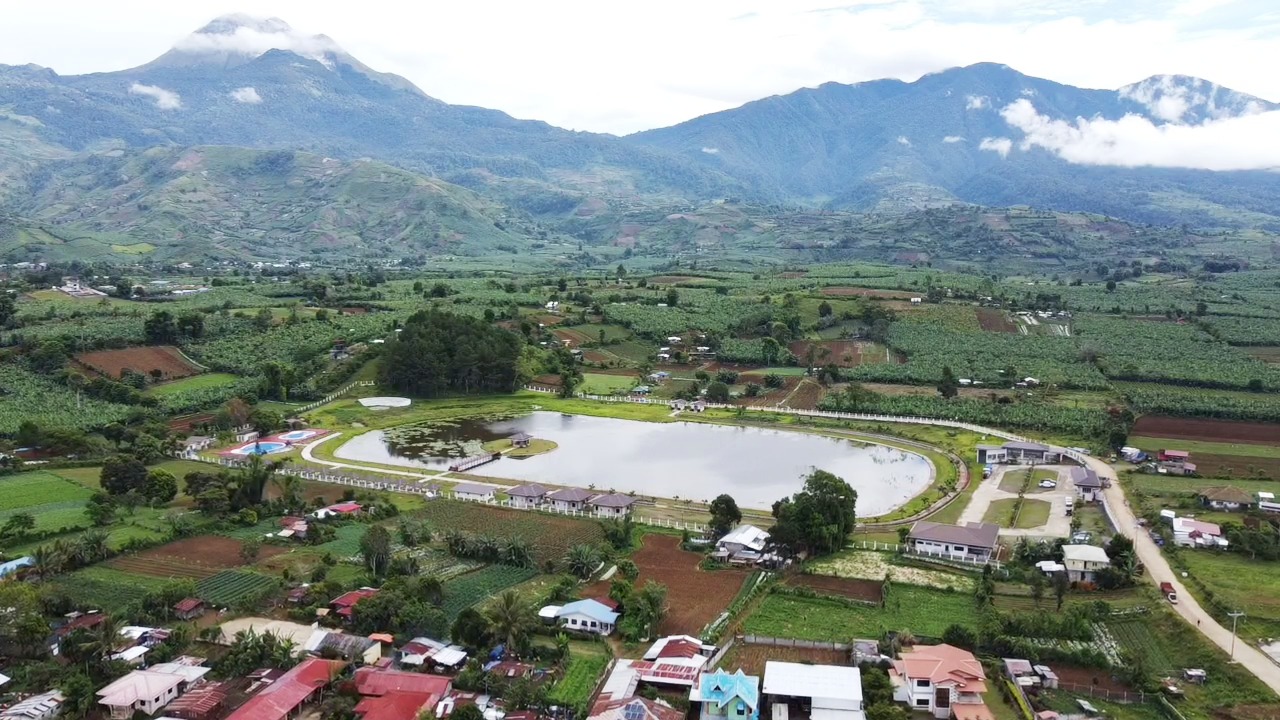
The Department of Public Works and Highways (DPWH) has recently-turned over to the city government of Digos, Davao del Sur, the newly-completed Mt. Apo Agri-Eco Tourism Park which is expected to bring more tourists in the province.
In a report to DPWH Secretary Manuel M. Bonoan, DPWH Davao del Sur District Engineering Office reported the completion of the entire P116.90-million development project in Barangay Kapatagan, surrounding Lake Cometa and overlooking Mt. Apo, the highest mountain in the Philippines.
According to the report, the turned-over project includes structures and facilities surrounding the park’s main attraction, Lake Cometa. Completed are: the admin building or reception complete with comfort rooms and electrical lightings, outlets, and plumbing fixtures in an area of 280 square meters; a 185-square meter amphitheater; three (3) duplex villas with an area of 90 square meters including porch and comfort rooms; one (1) unit of three-bedroom duplex villa; a guard house with an area of 64 square meters; a 280-square meter gazebo, 288-square meter restaurant with comfort rooms; four (4) comfort rooms for male and female with toilets and shower area; 14 day tour cottages; two (2) swimming pools, measuring 250 square meters and another 130 square meters; and 555-meter concrete perimeter fence with a height of five (5) meters.
DPWH also constructed an access road leading to the park with a total length of 450 meters and width of 6.7 meters; pathway and riprapping of Lake Cometa with a length of 382 meters; storm drainage and concrete step pads with a length of 432.53 meters; and 598-meter drainage structure composed of reinforced concrete pipe culvert, manhole, and stone masonry catch basin.
“With the completion of this fully-equipped agri-ecotourism park, locals and foreign visitors of Davao del Sur now have a new place to unwind and be one with nature 24/7,” said Secretary Bonoan.
The Captable
Social Story
Enterprise Story
The Decrypting Story
Daily Newsletter
By providing your information, you agree to our Terms of Use and our Privacy Policy. We use vendors that may also process your information to help provide our services. This site is protected by reCAPTCHA Enterprise and the Google Privacy Policy and Terms of Service apply.
Founder first
Announcement
Startup Sectors
Women in tech
Entertainment
Art & Culture
Travel & Leisure
Curtain Raiser
Wine and Food
Why agri and eco-tourism have become popular with city dwellers and busy professionals
Wednesday February 06, 2019 , 5 min Read
It has increasingly found takers as it gives tourists an opportunity to experience rural life, taste the local food and get familiar with various farming tasks. It provides one an escape from the hassles of daily life.
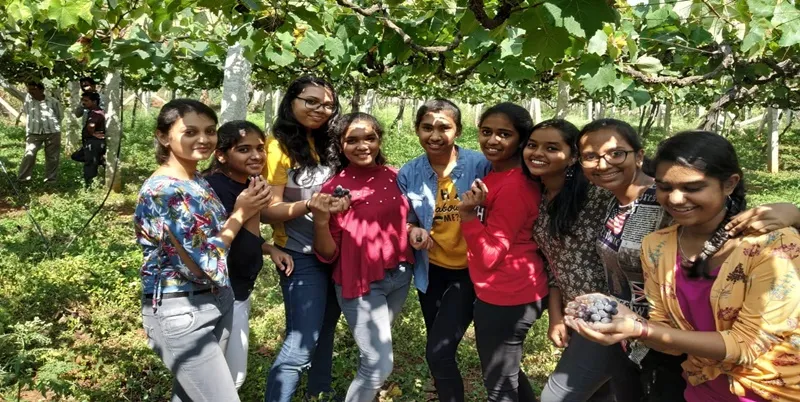
Agritourism is the form of tourism that capitalises on rural culture as a tourist attraction. It has gained a new dimension as a potential income- and employment-generating activity. The symbiosis between tourism and agriculture that can be found in agritourism is a key element of eco-friendly and socially responsible tourism.
Travel and tourism are human resource-intensive, employing, directly and indirectly, eight percent of the global workforce. It is estimated that one job in the core tourism industry creates about 1.5 additional or indirect jobs in the tourism-related economy. Concentrating on agritourism will reinforce the employment potential of the tourism sector with increased local hiring and sourcing and significant opportunities in tourism oriented toward local culture and the natural environment. In agritourism subsector, increasing the involvement of local communities, especially the poor, in the tourism value chain can contribute to the development of local economy and poverty reduction. This can include the local supply of products, labour, and tourism services.
There is increasing evidence that more sustainable tourism in rural areas can lead to more positive poverty-reducing effects. Nowadays more and more travellers are found to favour environment-friendly tourism and are willing to pay for related experiences. Traditional mass tourism has reached a stage of steady growth but agro-eco-tourism, nature, heritage, cultural, and “soft adventure” tourism too are doing well and are predicted to grow rapidly over the next two decades.

Agritourism is similar to eco-tourism except that its primary appeal is not the natural landscape but a cultural landscape. Agritourism can promote regional development and helps to conserve diversity in plant and wildlife. An advantage of this approach is that rural areas are popular destinations for holidays and excursions, particularly cultural landscapes, which still give a glimpse of how past generations lived and worked. Specific plans, mechanisms and tools to educate small- and medium-sized tourism-related enterprises will then become critical. The promotion and widespread use of internationally recognised standards for sustainable tourism can help businesses understand the practical aspects of sustainable tourism and assist them in mobilising investment.
Tourism has emerged as one of the largest global economic activities. As per the estimate of World Travel and Tourism Council (WTTCC), tourism generated more than worth $5 trillion of output equivalent to about eight percent of total world GNP(G.N.P is a broad measure of a nation's total economic activity). India’s share of world tourist arrival has been merely four percent of the World Trade and Tourism Organization. in its Tourism vision 2020 has projected that there would be about 1.6 billion international tourists in all countries of the world by the year 2020. As per the same estimation, India is expected to fuel 4.5 times growth in international tourists’ destination thus playing a major role in the economy of the states.
Agro-eco-tourism
Agro-eco-tourism is the latest concept in the Indian tourism industry, which normally occurs on farms. It is the symbiotic association of farming sector, tourism industry and farm business. It is the economic activity that occurs when people link travel with agricultural products, services or experiences to cater to the needs of mutual demands. Agri-eco-tourism entails visiting a working farm or any agriculture, horticulture or agribusiness operation, for the purpose of leisure, education or active involvement in the activities of the farm or operation. It gives you the opportunity to experience rural life, taste the local food and get familiar with the various farming tasks during the visit. It provides you with an escape from the daily hectic life in a peaceful rural environment. Agritourism provides tourists with an opportunity to be close to where the 75 percent of Indians live.
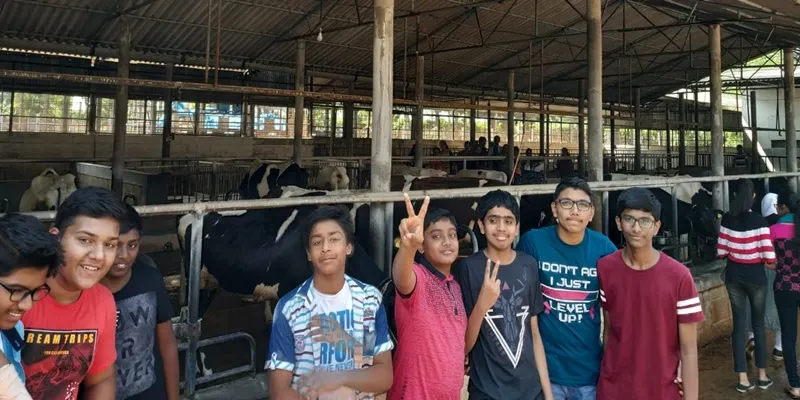
If the first indications of the joint ongoing study by the Confederation of Indian Industries (CII) and YES Bank are anything to go by, the scope of agri-tourism is very promising. The concept is to tap the vast market of inland urban tourists who want to take a break from a mechanical life and enjoy the peace and tranquillity of rural life in its natural abundance. Agro-eco-tourism is the new value-added agricultural business for improving the incomes and potential economic viability of small farms and rural communities. Agritourism can take many forms like roadside stands or on-farm direct sales, which can offer farm-fresh produce to travellers as well as interaction with growers. Agritourism ends farmers’ isolation and offers the opportunity to make new friends and build stronger links to the community.
Some eco-tourism destinations in Karnataka include Coorg, Madikeri, Dakshin Kannada, Karwar, Sirsi, Mysuru, Sringeri, etc. So when are you planning your next trip into rural India?
(Disclaimer: The views and opinions expressed in this article are those of the author and do not necessarily reflect the views of YourStory.)
- Human behavior
MOST VIEWED STORIES

Gaana.com: The Once Billion-Dollar Music Streaming Giant Sold for Just Rs.25 Lakhs!

Ola Electric has sent a strong response to MapMyIndia, says Bhavish Aggarwal

[Weekly funding roundup Aug 10-16] VC inflow nearly triples
![agri eco tourism park [Weekly funding roundup Aug 10-16] VC inflow nearly triples](https://images.yourstory.com/cs/2/220356402d6d11e9aa979329348d4c3e/funding-roundup-LEAD-1667575602969.png?mode=crop&crop=faces&ar=1%3A1&format=auto&w=3840&q=75)
Scaling tech in India: Lessons from Namma Yatri’s driver-centric approach

Twelve agri-tourism sites to be promoted, integrated into traditional sites to boost farmers' income, rural economic activity
- 1 April 2018
Source: Noon Break Balita 1 Apr 2018
Twelve agri-tourism sites to be promoted, integrated into traditional sites to boost farmers' income, rural economic activityTwelve agri-tourism sites have been identified for integration into traditional eco-tourism sites as part of boosting farmers'income and stirring up rural economic activity.
In a move to put into effect the Farm Tourism Development Act (Republic Act 10816), farm tourism sites will be promoted by the Department of Tourism (DOT) in a way that will maximize use of resources through integration, according to Rebecca Villanueva-Labit, DOT Regional Director Region 4-A.
"The envisioned integration of tourism and farming allows more efficient resource utilization which can provide jobs, increase income, business opportunities, and reduce urban migration," Labit said in a farm tourism workshop organized by the Southeast Asian Regional Center for Graduate Study & Research in Agriculture (SEARCA).
SEARCA has pushed for the development of the farm tourism sector, recognizing it is a way to integrate small farmers into the bigger supply chain. Besides, it promotes practice of environment-friendly agriculture.
Since small farmers need to have numerous income stream in order to become globally competitive in light of ASEAN integration, farm tourism will be a key to helping lift farmers out of poverty, according to SEARCA Director Dr. Gil C. Saguiguit Jr.
"Agritourism is an innovative pathway of us at SEARCA to achieve Inclusive and Sustainable Agricultural and Rural Development that should benefit small farmers," said Saguiguit.
"Farm tourism has the potential to sustain agricultural practices due to a steady stream of income that is less dependent on weather, markets, pests, or diseases," said Labit.
These are the 12 identified agri-tourism sites particularly in CALABARZON (Cavite, Laguna, Batangas, Rizal, Quezon), the region known to have many farm tourism offerings: Kaharian Farm, Lipa, Batangas; Forest Wood Garden, San Pablo City, Laguna; Ato Belen's Farm, San Pablo City, Laguna; Costales Nature Farms, Majayjay, Laguna; Flor's Garden & Nature Haven Inc., Antipolo City, Rizal; Teofely Nature Farms, Silang, Cavite; Domingo Permafarms, Antipolo City; Chad's Nature Farm, Mataas na Kahoy, Batangas; Nurture Farmacy, Amadeo, Cavite; Terra Verde Ecofarm, Maragondon, Cavite; Moca Family Famr, Padre Garcia, Batangas; and Graco Farms, Pila, Laguna.
After finding gaps, DOT is supporting farm tourism small and medium enterprises (SMEs) in promoting tourist arrivals. Labit said government will hold business-to-business missions, travel missions and expositions, training programs, and networking to promote the agri-tourism sites.
The 12 agri-tourism sites will be included in tour packages that used to offer just traditional ecotourism sites in CALABARZON:
Pansipit River & Volcano, Island Bird Sanctuary, San Nicolas, Batangas; Masungi Karst, Tanay, Rizal; Mt Makiling Forest Reserve, Los Banos, Laguna; Tayak Adventure, Nature & Wildlife Park, Rizal, Laguna; Lobo Agri-ecotourism Sites, Lobo, Batangas; Cagbalete Old Mangroves, Mauban, Quezon; Quezon Protected Landscape, Atimonan, Quezon; Macatad Ecotourism Site, Siniloan, Laguna; Mt. Daraitan, Tanay, Rizal; Cardona Rock Garden in Rizal; Pamitinan Protected Landscape, Rodriguez, Rizal; and Kilangin Falls, Liliw, Laguna.
Also part of the program is mixing in farm tourism with faith and pilgrimage tourism; dive and marine tourism; sports and recreation sites; and sun and beach tourism.
The pilgrimage sites are Basilica of Saint Martin of Tours, Taal, Batangas; Marian Orchard, Balete, Batangas; Regina Rosario Institute for Contemplation in Asia; Tanay, Rizal; Tayak Nature, Adventure & Wildlife Park, Rizal, Laguna; Kamay ni Jesus Shrine, Lucban, Quezon; and Padre Pio National Shrine, Sto Tomas, Batangas.
The dive sites are the Diving, Snorkeling, & Macrophotography Tour in Anilao, Mabini, Batangas; Republiq Waterpark, Nuvali, Santa Rosa, Laguna; Lago de Oro, Calatagan, Batangas; Windsurfing & Skimboarding, Lake Caliraya, Cavinti, Laguna; Flowboarding, Bacoor, Cavite; Rock Balancing, Daranak Falls &Daraitan River, Tanay, Rizal; Verde Island Passage, Batangas City, Batangas; and Hot Spring Resorts, Panso Calamba City, Laguna.
Among the sports and recreation sites are the Mt Malarayat Golf & Country Club, Lipa, Batangas; San Lazaro Leisure Park, Carmona, Cavite; Metroturm Racetrack, Malvar, Batangas; Paragliding site, Carmona, Cavie; Carmona Racing Circuit in Cavite; and Dragon Boat Racing, Tanauan City, Batangas.
The sun and beach tourism sites are found in Laiya, San Juan, Batangas; Calatagan, Batangas; Pagbilao, Quezon; Matabungkay, Lian, Batangas; Nasugbu, Batangas; and Cagbalete Island, Mauban, Quezon .
The leisure & entertainment sites are Enchanted Kingdom, Sta. Rosa City, Laguna; Puzzle Mansion, Tagaytay City, Cavite; Nuvali Evoliving Shopping, Santa Rosa, Laguna; and Arts & Crafts Shopping (wood whittlers of Pakil, footwear of Liliw, woodworks of Paete), Laguna.
There are also two health and wellness sites—The Farm at San Benito in Lipa, Batangas and Nurture Wellness Village, Tagaytay City, Cavite. (Growth Publishing for SEARCA) (Melody Mendoza Aguiba)

- College, Los Baños, 4031 Laguna, Philippines
- Laguna Lines: +63 49 554 9330 to 39 +63 49 536 2290 +63 49 572 3743
- Manila Lines: +63 2 8657 1300 to 02
- +63 49 536 7097
- Scholarships
- Institutional Development Assistance
- Publications
- Refereed Journal (AJAD)
- News & Updates
- Short-term Training
- Conferences and Fora
- SOLVE Webinar Series
- Seminar Series (ADSS)
- Adjunct Fellows Program
- Visiting Research Fellows Program
- University Consortium
- Privacy Policy
Agri-tourism eco-lodge feels like Jurassic Park
Oversized hummingbirds and a pair of toucans flit about a tangle of jungle that is 50 shades of moist green. A hefty iguana flicks his tongue at me as troops of treetop howler monkeys unleash a choir of otherworldly rasps and gasps that sound more like aggravated dinosaurs: I feel like I'm on the set of Jurassic Park and I haven't even got out of the shower yet.
You can save this article by registering for free here . Or sign-in if you have an account.
Full Screen is not supported on this browser version.
You may use a different browser or device to view this in full screen.
Reviews and recommendations are unbiased and products are independently selected. Postmedia may earn an affiliate commission from purchases made through links on this page.
Article content
Oversized hummingbirds and a pair of toucans flit about a tangle of jungle that is 50 shades of moist green.
A hefty iguana flicks his tongue at me as troops of treetop howler monkeys unleash a choir of otherworldly rasps and gasps that sound more like aggravated dinosaurs — I feel like I’m on the set of Jurassic Park and I haven’t even got out of the shower yet.
Belcampo Belize is an agri-tourism eco-lodge that is all about saturating its guests in locally farmed organic food, Mayan culture and tropical nature and that includes a giant, full-frontal picture window facing the virgin jungle in every suite’s spa-like bathroom.
Subscribe now to read the latest news in your city and across Canada.
- Unlimited online access to articles from across Canada with one account.
- Get exclusive access to the Vancouver Sun ePaper, an electronic replica of the print edition that you can share, download and comment on.
- Enjoy insights and behind-the-scenes analysis from our award-winning journalists.
- Support local journalists and the next generation of journalists.
- Daily puzzles including the New York Times Crossword.
Create an account or sign in to continue with your reading experience.
- Access articles from across Canada with one account.
- Share your thoughts and join the conversation in the comments.
- Enjoy additional articles per month.
- Get email updates from your favourite authors.
Sign In or Create an Account
An English-speaking country wedged between Mexico and Guatemala, Belize’s sparsely populated southernmost province of Toledo is a remote frontier lucky to have retained about 75 per cent of its rainforest.
I fly into Toledo’s Caribbean-paced main town of Punta Gorda (pop: 6,000) with its funky mix of dreadlocks, expats and rickety seaside watering holes and am picked up for the 20-minute shuttle to the hilltop perch of Toledo’s only luxury lodge overlooking 23,000 acres of largely untrammelled jungle.
Relaxing on wicker sofas overlooking the jungle, I meet several couples who chose Belcampo for its varied activities — one woman loved the unique tropical foodie/farm immersion in exotic edibles while her hubby went saltwater fly-fishing for the elusive trio of bonefish, tarpon and permit: a bird watching aficionado had her binoculars aimed at toucanettes and motmots at 5 a.m. while her husband mountain biked, trekked to waterfalls and swam through huge limestone caves. Together they snorkelled, prowled Mayan ruins and savoured fresh organic salsa and sundowners with coconut, citrus and herbs from the property’s Cocktail Garden.
Plan your next getaway with Travel Time, featuring travel deals, destinations and gear.
- There was an error, please provide a valid email address.
By signing up you consent to receive the above newsletter from Postmedia Network Inc.
A welcome email is on its way. If you don't see it, please check your junk folder.
The next issue of Travel Time will soon be in your inbox.
We encountered an issue signing you up. Please try again
While some resorts brand themselves “eco” by simply asking guests to hang up towels for a second use, Belcampo takes the designation to a seriously higher level.
While offering five-star quality in their 16 suites, they nixed wasteful amenity bottles in favour of in-room and spa products locally and organically produced. Laundry is line-dried. Furniture is crafted on-site from sustainably harvested wood.
Table waste is composted or fed to chickens and pigs residing on Belcampo’s 1,000-acre farm, the source of the organic dining room’s free-range eggs nestled alongside cinnamon-bark-house-smoked bacon, freshly squeezed orange juice and papaya marmalade.
When I ask my waiter how far my first breakfast has travelled to reach my plate, he does a quick count — “About 500 metres.”
“Roughly 70 per cent of the food we put on the table is local,” says Mara Jernigan, Belcampo’s Canadian general manager.
“What we don’t produce ourselves we source from local farmers whose practices we know well, including dairy products and veal from a nearby Mennonite community.”
Mara is a chef, cooking teacher, organic farmer and longtime food activist instrumental in Vancouver Island’s Slow Food movement.
After setting up and running the Cowichan Valley’s Fairburn Farm with its culinary school and boot camps, she grabbed the chance in 2011 to help convert a failed Belizean fly-fishing lodge into an eco-retreat on the cutting edge of agri-tourism. In a country with no McDonald’s, Walmart or Costco, the feisty foodie started up a working farm, managing a staff of 70 locals representing Toledo’s cultural kaleidoscope — descendants of Confederates, Caribbean slaves, British buccaneers, East Indian indentured labourers and indigenous Mesoamericans.
My first morning starts with a wander through the hawkers and colourful stalls of Punta Gorda’s fish and farmer’s market. Then it’s off to Belcampo’s Bean to Bar chocolate-making workshop. Elon Ranguy, director of farm operations, starts it off with the Farm Tour, showing off crops including purple star apples, turmeric, coffee and a nursery crammed with wild, high quality criollo cacao plants. We tasted the sweet fresh fruit enveloping the almond-sized bean in the ripe pod Elon split with his machete. Then we moved inside to one of three modern agri-tourism pavilions — the other two will soon be busy with coffee and artisanal rum workshops — tasting our way throughout the roasting, grinding and tempering processes until we finally pour satiny-brown liquid into forms for our own chocolate bars!
The next day guide Vince Ical takes us to the Mayan ruins of Lubaantun with its temple platforms and museum collection of clay figurines and whistles. Then we head to his own Mayan village of Blue River where his wife creates a delicious traditional Belizean meal including curried palm hearts, marinated grilled chicken from their free-range backyard critters and still-hot corn tortillas served in their home overlooking a turquoise stream. We hike up that river afterwards, slipping on life-vests and swimming into a great yawning cave winding in the vast cool blackness towards a small waterfall, headlamps spotlighting crystal stalactites sparkling on the high ceiling.
Over the following days I kayak, hike and visit the commercial Spice Garden to see exotic flavours like cardamom, vanilla and nutmeg on the vine. I watch chocolate being made the Mayan way by Eladio Pop’s family (he is featured in the NFB documentary The Chocolate Farmer) including grinding the beans on a stone metate and sipping hot cocoa out of a calabash shell .
Snorkelling With the Chef is on the menu for my final day when we cruise down the mangrove-lined Rio Grande into the Caribbean Ocean. We snorkel, helping chef Brandon Genus free dive for conch. After he spears two snappers and heads off to slice and dice, we explore in the warm waters off tiny Moho Cay spotting barracuda and sergeant majors. On the way back, when Brandon delivers conch and snapper ceviche, we scoop it with homemade tortilla chips while swishing freshly picked allspice leaf around in our Mayan Sunset cocktail.
From Belize City’s Goldson International Airport (BZE) it is a 60-minute Tropic Air flight to Punta Gorda.
Belcampo Belize www.belcampobz.com has 16 suites with screened verandas including a hammock, spa-style bathrooms with jungle views, free Wi-Fi, a gym and laundry service. MORE INFORMATION
The Chocolate Farmer is a National Film Board of Canada documentary about Eladio Pop’s chocolate farming. www.youtube.com/watch?v=-XT5etmp-fA
Southern Belize Tourism: www.southernbelize.com/honduras.html
Travel Belize official site: www.travelbelize.org .
A summer storm may be headed for B.C.'s South Coast

Richmond man convicted of killing two gets statutory release, but with conditions
'like a slow-motion oil spill': b.c. tour guides haul 32.5 tonnes of plastic debris from ocean, newcomers helping to cushion metro vancouver from slowing economy, possible recession: report, pne 2024: here's how to save money on gate admission.
This website uses cookies to personalize your content (including ads), and allows us to analyze our traffic. Read more about cookies here . By continuing to use our site, you agree to our Terms of Service and Privacy Policy .
You've reached the 20 article limit.
You can manage saved articles in your account.
and save up to 100 articles!
Looks like you've reached your saved article limit!
You can manage your saved articles in your account and clicking the X located at the bottom right of the article.

- Save Our Oceans
EXPLORE BEACH DESTINATIONS
All Beaches in Fokino

- What is Agritourism?
- History of Arkansas Agritourism
- Meet the Farmers
- Classes and Workshops
- Become a Member
Need an escape? Go outside.
- {{ listingType.name }}
10 Best Agritourism Destinations in Japan
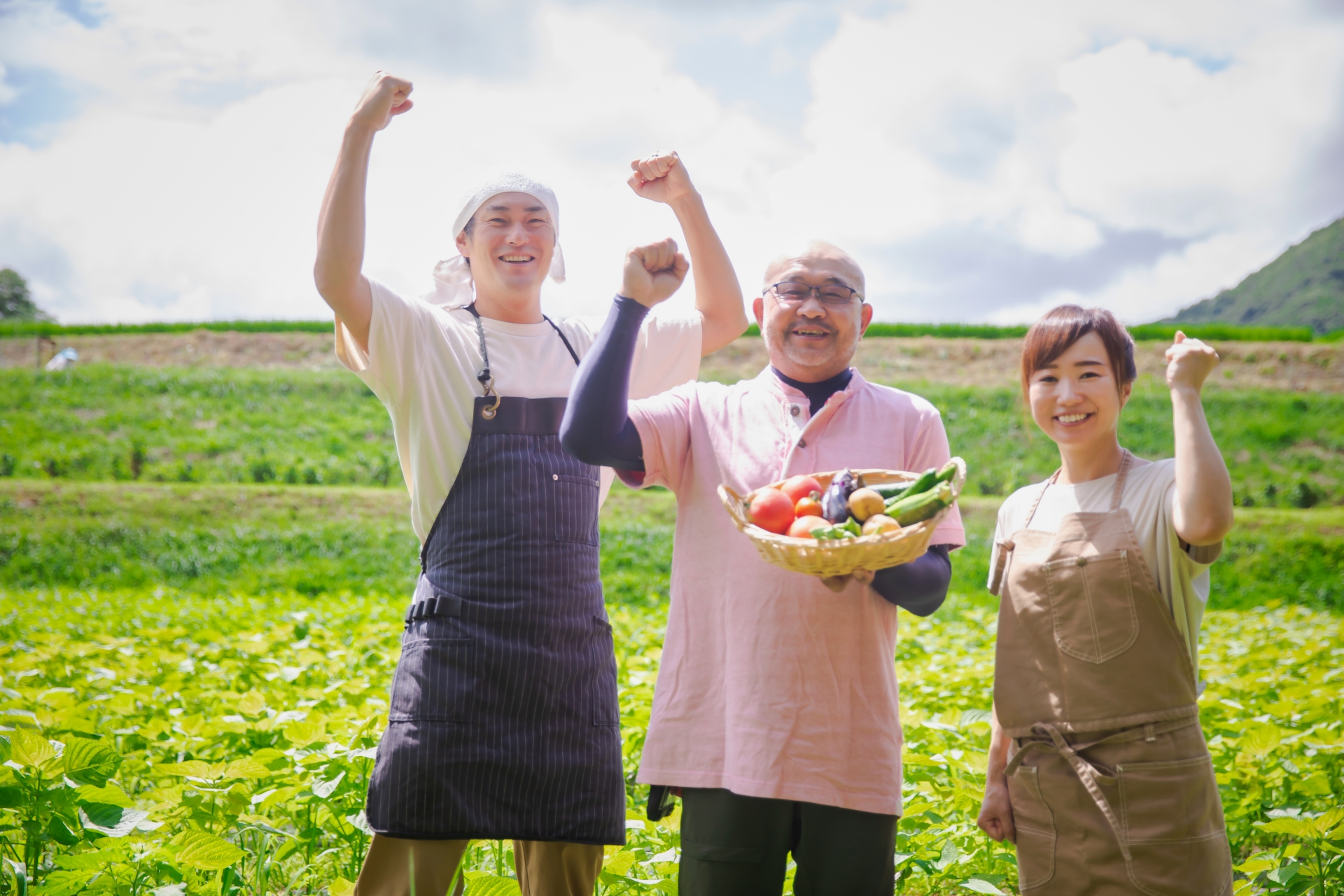
Taylor is a 19-year-old student at an international university in Japan. Since she was 10 years old, she has been crazy about American pop music, and it made her study English very hard. She likes listening to music, going to cafes and cooking in her free time.
When traveling to Japan, most people decide to book a hotel or traditional Japanese ryokan for their accommodation. However, have you ever thought about staying in a more homely place with some of the local farmers? If you are at all interested in Japanese agriculture, the slow paced rural Japanese lifestyle, and interacting with local people, you should definitely consider agritourism in Japan. We hope this article helps you get a better idea of agritourism in Japan and that you can experience it first hand on your next visit!
1. Iida (Nagano)
2. maoi jiyu-no-oka winery (hokkaido), 3. uchiko (ehime), 4. wakaba farm (wakayama), 5. mirai noen (wakayama), 6. kamado (akita), 7. mima (tokushima), 8. nihonmatsu (fukushima), 9. nakamura ranch (kagoshima), 10. akagawara (okinawa), japan wonder travel tours , other articles you might be interested in.
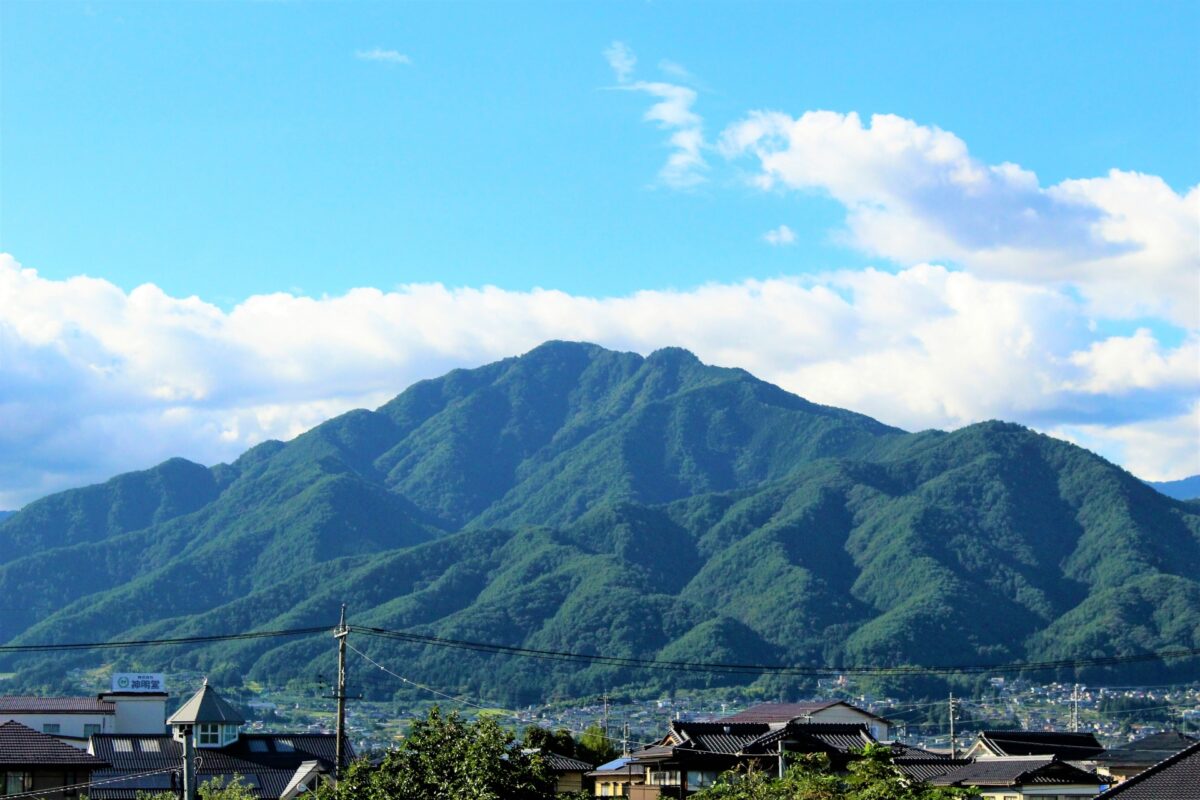
In 2021, Iida city of Nagano Prefecture agreed to a partnership with Airbnb Japan in order to help promote the growth of sustainable tourism. The city is working on revitalizing the local economy through farm stay tourism and the reuse of uninhabited houses. In the city of Iida there are over 100 farmers, and they offer travelers a variety of agricultural experiences such as rice planting and harvesting, apple picking, tea picking, and making dried persimmons(depending on the season you visit). Moreover, you will have the chance to learn how to make gohei mochi, a local specialty that is a rice cake with miso sauce.
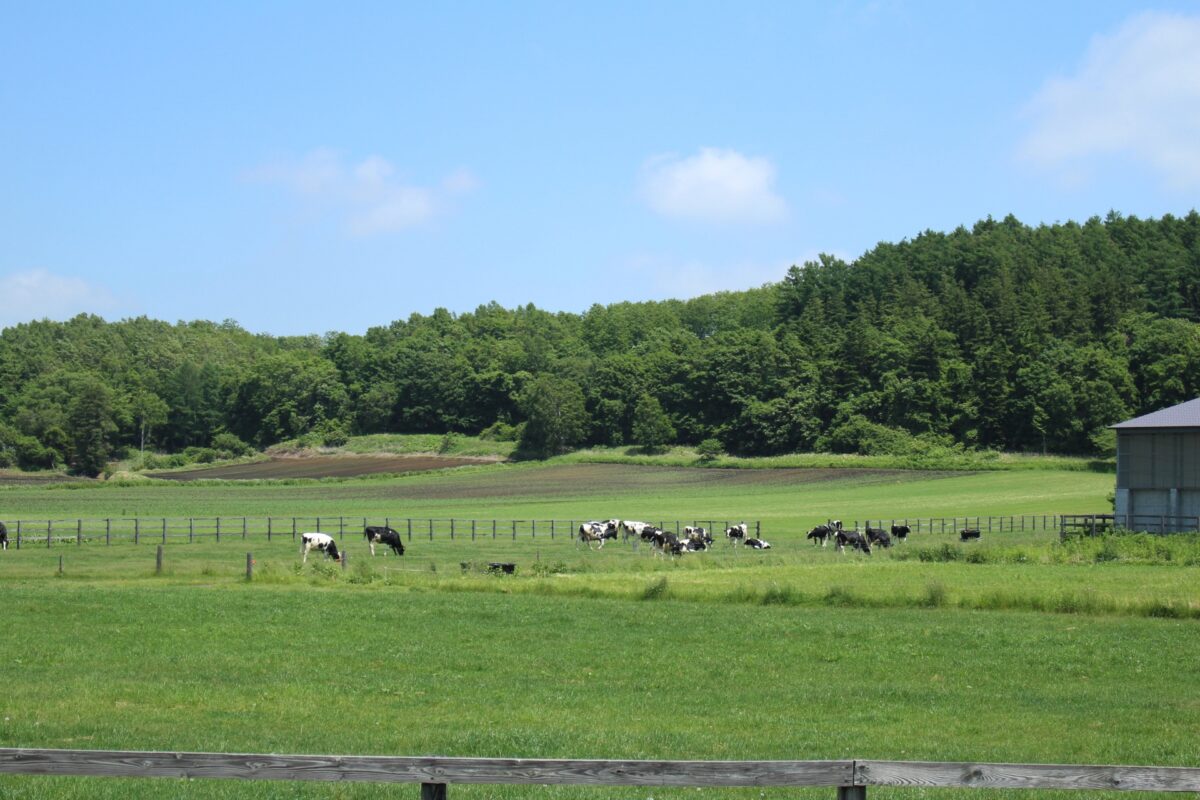
In Naganuma city of Hokkaido not far from Sapporo , there is a famous lodge with a winery that is known for its small-scale high quality production. The wine is mainly made from wild grapes, such as Yama Budo, Yama Sauvignon, Yama Fredonia, Himalaya, and Niagara, which are all original varieties of the house. You can observe the wine production process at the winery and of course taste some of it for yourself as well. You can rent out the whole lodge if you are hoping for a relaxing and private stay. From the lodge, there is a beautiful view of the Ishikari plains. If the weather is good, you can also enjoy a nice BBQ outside.
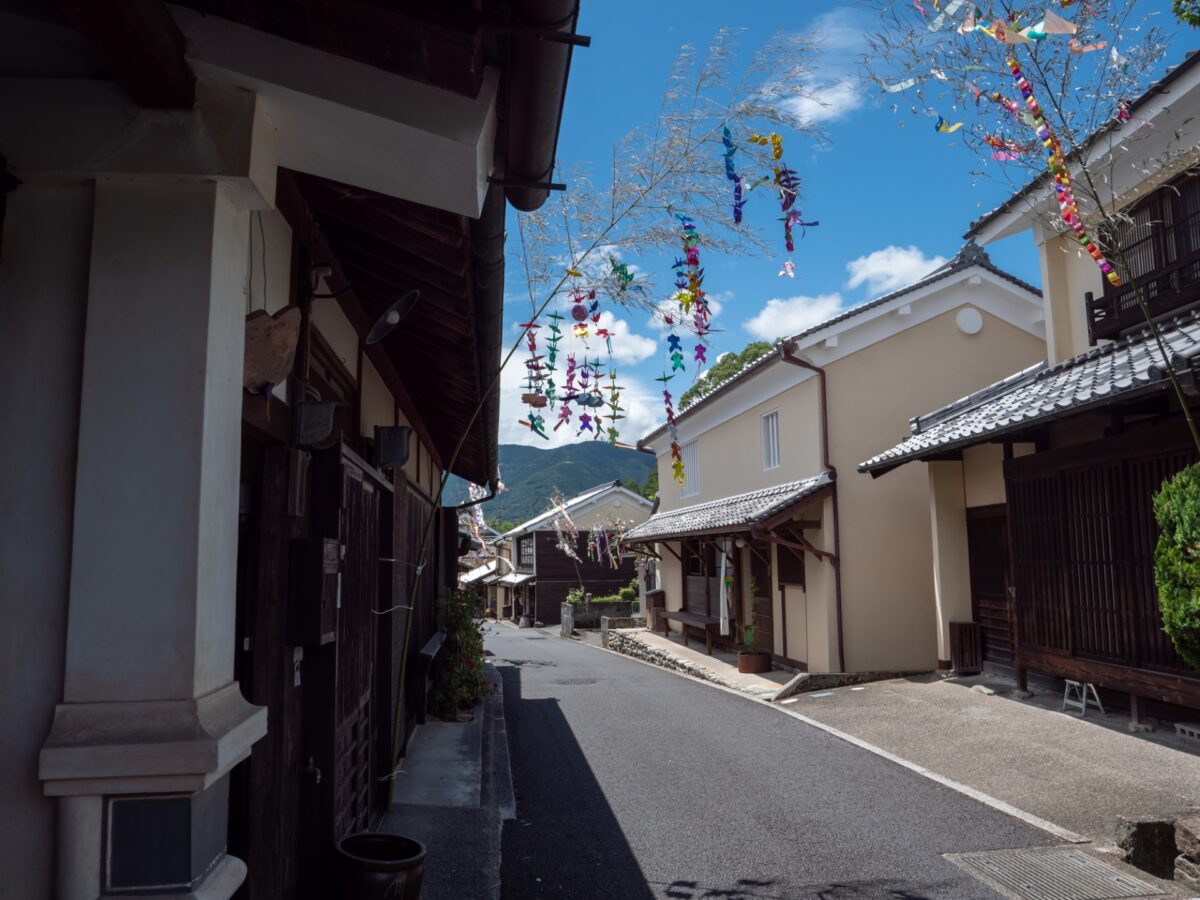
Uchiko city in Ehime Prefecture offers a wide range of activities for tourists. The city has agreed on a partnership with many of the local farmers to promote and strengthen the connection with the local community and tourists. You can choose from many options that are not only limited to agriculture. Some of these include soba making, Japanese paper making, and other training practices. There are many buildings with traditional old-fashioned streets and some of the buildings are used as museums. Moreover, depending on the season you visit the city, you can enjoy different festivals, such as the cherry blossom festival, lantern festival, Japanese maple festival, and snow festival .
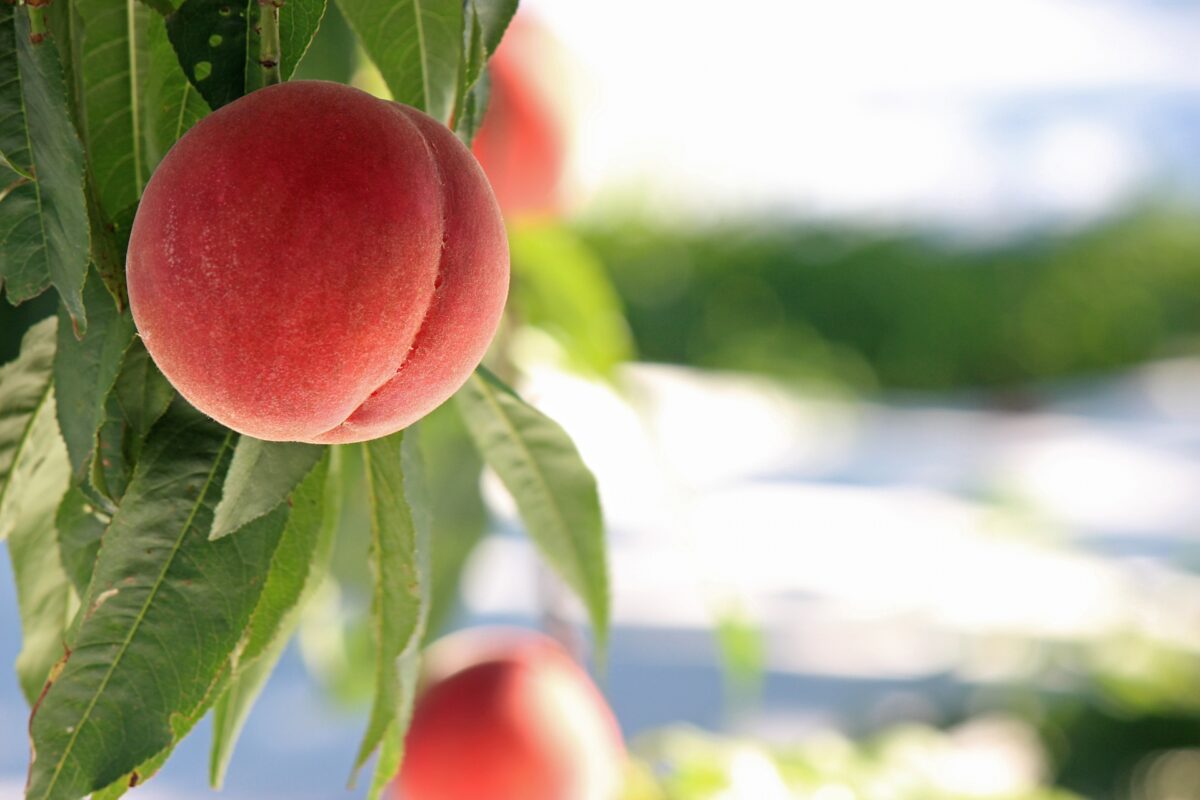
Wakayama is the fourth-largest peach harvesting prefecture in Japan. There is a farm called Wakaba farm in Momoyama town, named after momo, which means peach in Japanese. The farm is run by a young couple that has welcomed tourists for years. On the farm, you can try your hand at farm work, tend to the peach trees and even pick a few peaches over the summer when they are in season. After the peach season, you can also pick mandarin oranges there. You will even have the option to stay at the farm with the couple and their children!
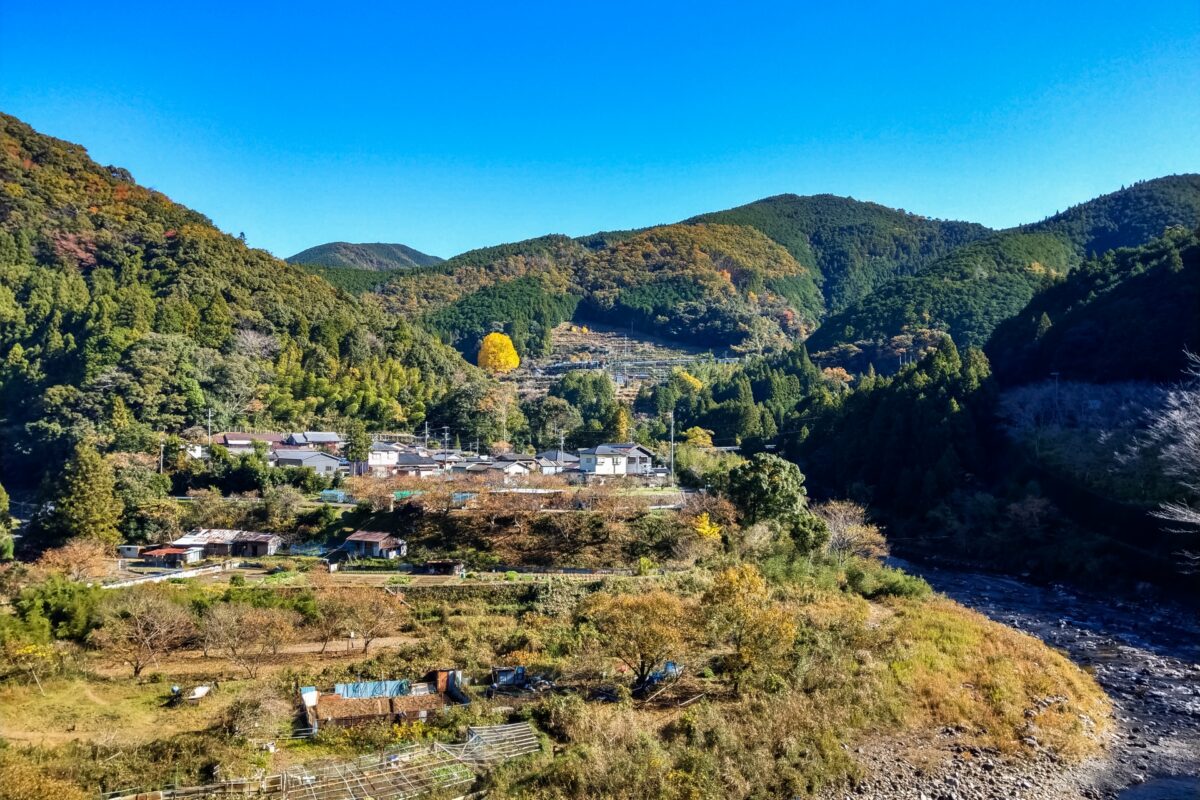
Mirai Noen is another great agritourism stay in Wakayama. This part of Japan is famous for not only peaches but also mandarin oranges and Japanese apricots, of which it has the largest harvest in Japan. Tourists visiting the area have the opportunity to pick the local fruit. The farm has over 100 years of history of harvesting mandarin oranges and Japanese apricots. The farmers also like fishing, so if you stay with the family, they will happily take you fishing where you will be able to see the beautiful sunset. The farm often welcomes tourists from various different countries, and they are very warm and friendly when it comes to any international guests.
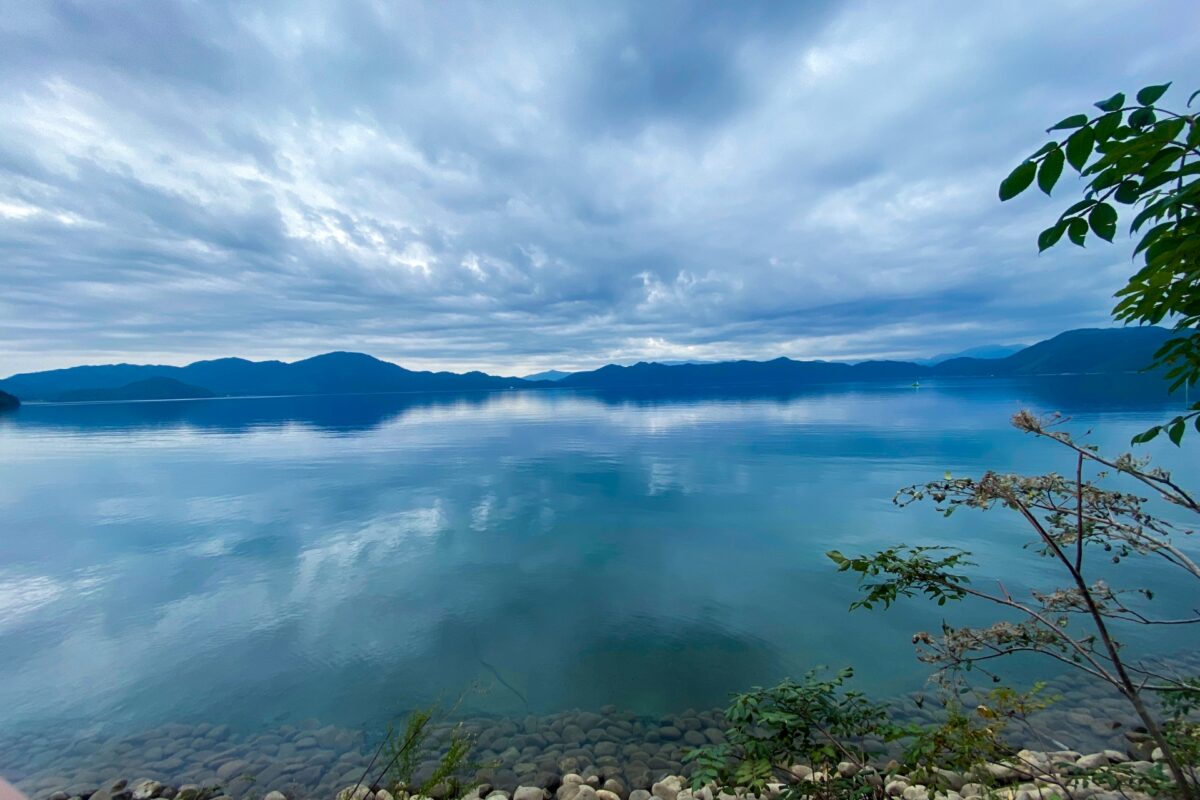
If you are interested in staying with local people right by a beautiful lake , we highly recommend Kamado ! From the guest house, you can see Lake Tazawa, the deepest lake in Japan with stunning emerald green water. At the guest house, there are two main seasonal activities: agriculture and cooking. As for the agriculture activities, the guest house offers vegetable harvesting and planting in the spring and fall, fishing in Lake Tazawa in the summer and fall, and snowmobiling in winter. When it comes to cooking activities, guests have the opportunity to make pizza, Nagashi-noodles, and desserts. The owner states with confidence that their guest house is the most comfortable and relaxing stay among all the accommodations near Lake Tazawa!
In Mima city of Tokushima Prefecture , there is a wonderful guest house owned by some of the local farmers. The city is located in a rural area, so the surroundings are full of nature . The fresh air in the morning refreshes you and you may be able to see a sea of clouds if you are lucky. At night, the sky is filled with beautiful stars and the sound of insects in the background. The farmers will offer to make you local meals during your stay, and you can even try your hand at agricultural activities such as harvesting wasabi, tomatoes, eggplants and Japanese lime. Moreover, the farmers will teach you how to make tofu!
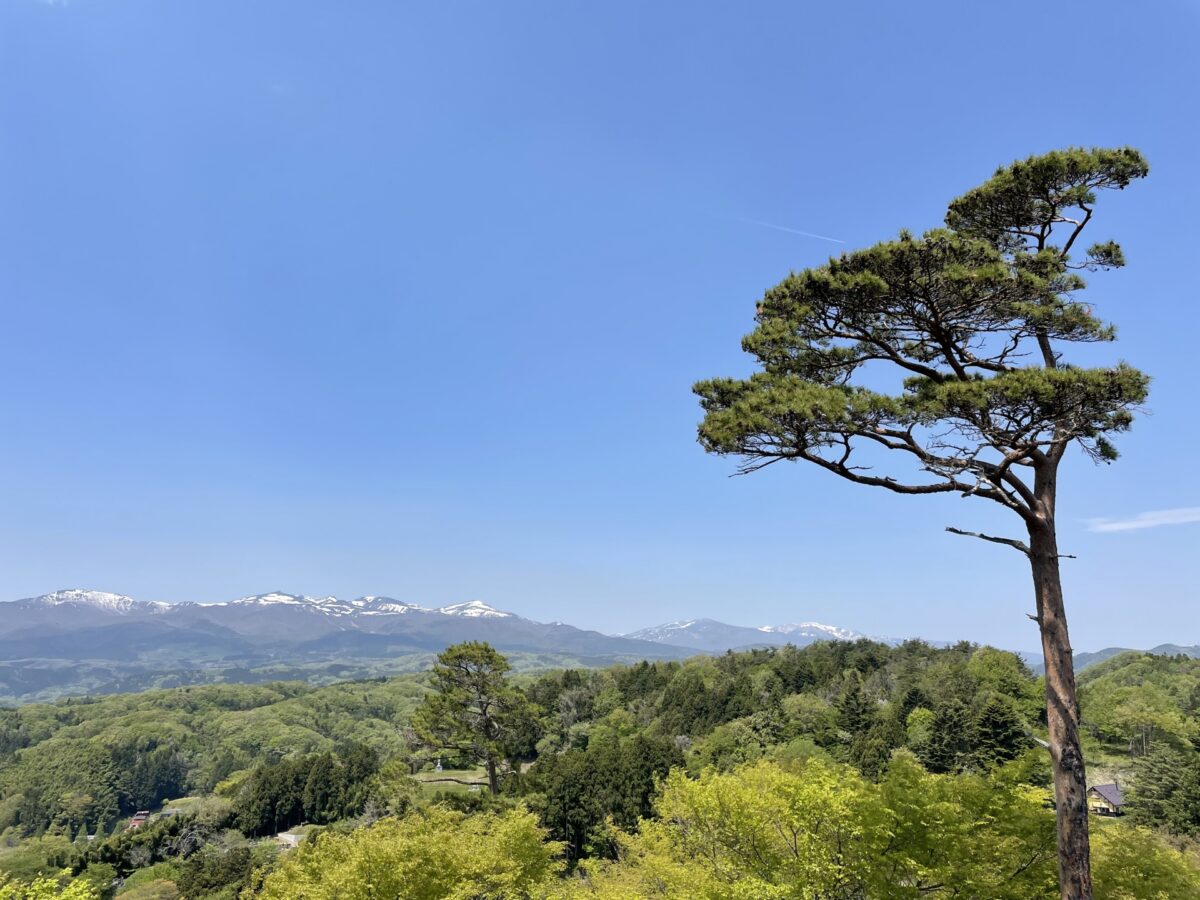
Matoba is a cozy little traditional guesthouse in Nihonmatsu city of Fukushima Prefecture . Nihonmatsu city was famous for silk farming long ago. Even though the production of silk has fallen into a decline, the guest house still maintains the tradition and allows tourists to partake in silk related activities such as mulberry pruning. One of the selling points of the guest house is their delicious dinner. They will serve you a local dinner with various kinds of vegetables right in front of the warm fireplace. If you want to stay in an old-style Japanese house in the winter, this may be a great option for you.
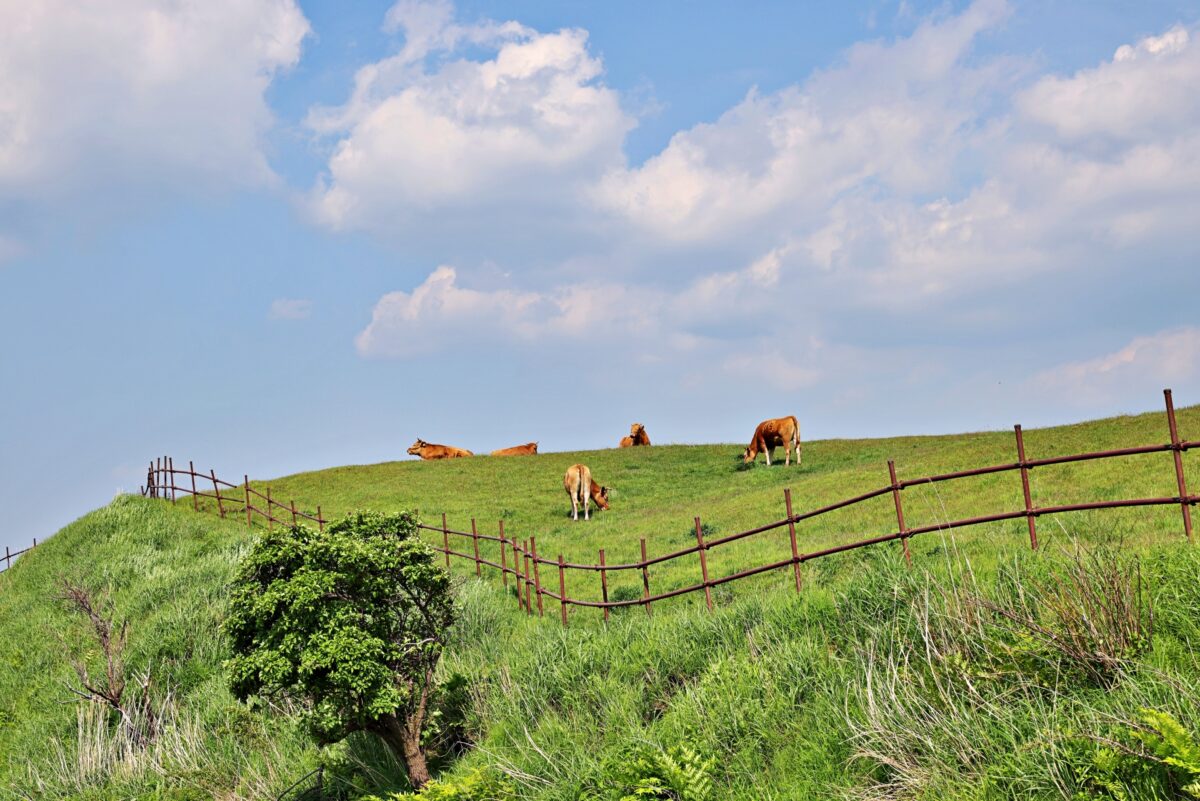
Agritourism is not only limited to agriculture but also extends to cattle breeding. At Nakamura Ranch in Kagoshima Prefecture , the highest beef producing prefecture in Japan, you can try many cattle related activities such as petting, taking care of and feeding the cattle, as well as a ranch tour. There are over 60 cattle on their vast ranch. You can stay at a nice guest house that is owned by the rancher. The open beautiful scenery of the ranch will help you refresh and allow you to experience Japanese life on a ranch.
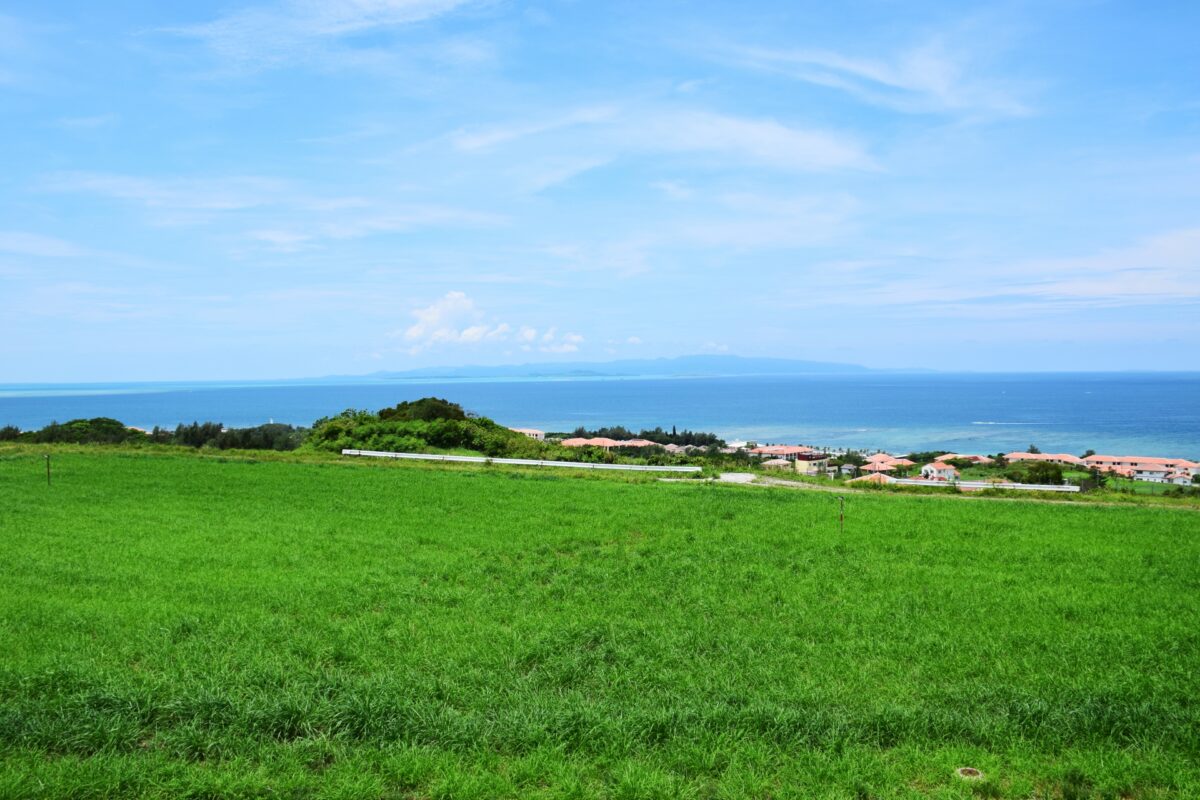
Okinawan culture is unique compared to most other prefectures when it comes to things like architecture, food and agriculture. In terms of architecture in Okinawa , the houses there have low ceilings and brick walls. As for the food and agriculture, since the climate is warmer than in other parts of Japan, there are loads of unique foods. In one of the island’s guest houses, Akagawara, you can learn how to grow things like shekwasha(an Okinawan citrus fruit), turmeric, herb and hibiscus with local farmers. Moreover, you can get a relaxing herbal massage, which is sure to help relieve stress!
All of the destinations we talked about in this article may not have the best access from the bigger and more urban areas of Japan, however, it is always great to experience and enjoy the slower paced Japanese traditional life in the countryside. We hope you found a spot or two from our list of the 10 best agritourism stays in Japan that you are interested in visiting next time you are here!
Japan Wonder Travel is a travel agency that offers guided tours throughout Japan. From private walking tours to delicious Food and Drink tours, we can help you organize the best tours just for you! If you want to explore Japan and learn more about the history and backstories of each area you are visiting, our knowledgeable and friendly English speaking guides will happily take you to the best spots! In addition, we can provide you with any assistance you may need for your upcoming trip to Japan, so please feel free to contact us if you have any questions or need some help!
▶ Tokyo Tsukiji Fish Market Food and Drink Tour Explore the most lively and popular fish market in Tokyo and try some of the local’s favorite street foods and sake with one of our friendly and knowledgeable English speaking guides!

▶ Tokyo 1–Day Highlights Private Walking Tour (8 Hours) There’s no better way to explore an area than taking a tour with a knowledgeable local guide. You will have the chance to learn about the history and interesting background stories of Tokyo, as well as discover some hidden gems which can be hard to do without a guide.

▶ Mt. Fuji Day Trip Bus Tour from Tokyo Experience the breathtaking views of Mt. Fuji by visiting the highlights of the area on our guided sightseeing bus tour! Departing from Shinjuku in central Tokyo, you can travel comfortably to all of the best spots in the area by bus.

▶ Kyoto Private Full Day Walking Tour On this full-day private tour of Kyoto, you will be able to see the highlights of Kyoto in just one day and at the same time develop a deeper understanding of both the culture of the area and Japan as a whole.

Follow us on Instagram , Facebook , Twitter , and TikTok for more travel inspiration. Or tag us to get featured!
Happy traveling!

- Popular destinations
- Hidden places in Japan
- Tours and workshop
- Food and drink in Japan
- Itinerary in Japan
- Places to visit in Tokyo
- Food and drink in Tokyo
- Seasonal events
- Tours & workshops
- Tokyo This Week
- Day trip from Tokyo
- Itinerary in Tokyo
- Places to visit in Kyoto
- Food and drink in Kyoto
- Itinerary in Kyoto
- Day trip from Kyoto
- Travel tips
- Accommodation
- Cultural tips
- Transportation
- Tokyo Tours
- Kyoto Tours
- Kimono Rental
- Fukushima Tours
- Mount Fuji Tours
- Tour Package
- Travel Concierge Service
- Media Kit(English/日本語)
Visit and enjoy a tour of CvSU Agri-Eco Tourism Park
By Antonio G. Papa, Ph.D.
The Cavite State University (CvSU) established the Agri-Eco Tourism Park (AETP) in a sprawling 5-hectare area of its more than 70-hectare rustic and green landholding at the main campus – the Don Severino delas Alas Campus – in Indang, Cavite on July 15, 2021.

According to CvSU President Dr. Hernando D. Robles, “the establishment of CvSU-AETP is one of the University’s ways in bringing back the interest and appreciation of the people to agriculture by providing them attractions, activities, services, amenities, and hands-on learning.”
At the CvSU-AETP, there are lots of things to see, experience, learn and something to buy. Prior to the tour, guests are held at the CvSU-AETP Information Center for a short briefing-orientation about the tour and a brief virtual presentation of the park.
After viewing the audio-visual presentation, the tour guide will lead the guests and will show them the two routes as passageways to the park. The first option is through the 100 concrete steps passing through the sloping vegetative ravine of around ten meters deep dubbed the Hagdan ng Kasaysayan.
The second option is to pass through a 20-meter long hanging bridge – called Tulay ng Karunungan. While roaming along the pathway, guests will see well-labeled plants and crops with corresponding identification and scientific names.
The tour guide will chronologically introduce guests to the following features of the AETP while trekking the 3-kilometer walk: 1. CvSU Bee Program, 2. Kapihan sa Kubo, 3. Technology demonstration hub on multi-storey cropping system, 4. Green house for ornamental plants and high-value vegetable crops, 5. FITS kiosk, 6. AETP Villas, 7. Technology-Innovation hub, 8. Birds paradise, 9. Native pigs and feathered animals, 10. Makapuno nutdragon fruit plantations, 11. Fish ponds, 12. NCRDEC Ecotrail, 13. CvSU Experiment station, 14, SPRINT Center, 15. CHARMS garden, and 16. CvSU lagoon.
The CvSU Bee Program
The CvSU Bee program supports instruction, research, extension and production functions of the University. It promotes the practice of beekeeping in the province of Cavite and the whole country.
CvSU conducts research to improve beekeeping practices, and post-harvest technologies. The research results are then disseminated to the community and are likewise utilized for instruction purposes.
Through the program, it extends assistance to starting beekeepers so as to strengthen their background and eventually lead them in running their own apiaries or meliponaries.
Kapihan sa Kubo
A few meters walk away from the CvSU Bee Program center, some nipa huts made of bamboo and roofed with nipa could serve as resting areas while sipping the CvSU Aguinaldo Barako Coffee Blend that can be ordered in the designated nearby cafeteria.
Technology demonstration hub on multi-storey cropping system
The coconut-based and coffee-based farming systems are showcased in a two-hectare area of the park. Multi-storey cropping system could be seen in the area – e.g. all these crops are systematically planted in the same area such as coconut, durian, rambutan, banana, guyabano, black pepper, and taro.
Green house for ornamental plants and vegetable crops
The green house – a rain shelter nursery and a protected structure for indoor ornamental plants and partially shaded high-value vegetable crops.
AETP villas
Adjacent to the green haven is the area where the six-unit Villa houses were built for rent. The house has a dimension of 6 meters by 7 meters and provides basic amenities such as two bedrooms, a shower and toilet in between the two rooms, a sala, and a dining area that’s very ideal for a family with two children. The unit house is very ideal for a newly-wed couple as the atmosphere is suited for honeymooners.

FITS Center kiosk
One of the potential amenities in the AETP is the presence of the Farmers Information and Technology Services (FITS) Center Kiosk with function hall for briefing and seminar purposes and an area for the display of CvSU products for sale. It also has a section for Information, Communication and Technology (ICT) materials for duplication and some for distribution to various groups of clientele.

Technology-Innovation hub
A building in the central part of the park is designated as the Technology-Innovation hub of CvSU. The building has two sections. One is for the display of the available products produced by the University and the other section is for the display of the products by the various FITS centers in the province of Cavite.
Birds’ paradise
Beneath the Technology-Innovation hub has a tree enclosed of net serving as cage of the local birds in captivity.
Native pigs and feathered animals
Another feature of the AETP is the pens for the native pigs and feathered animals such as native and heritage chickens.
Makapuno nut and dragon fruit plantations
Towards the southern portion of the AETP is a makapuno nut plantation. The makapuno nut is a special coconut that is full of meat and is used for sweets and as one of the ingredients for halo-halo.

On the other side of the area, a dragon fruit plantation can be seen. Dragon fruit production is one of the profitable crops being grown in the locality.

Four units of concrete fish ponds were constructed for the purpose of producing tilapia and other fish species.
NCRDEC Ecotrail
After the fish ponds, the trail with around two-hectare area designated for the National Coffee Research, Development and Extension Center (NCRDEC) will be experienced. There are coffee plantations planted with various varieties of coffee, coffee nurseries, NCRDEC Center, and Coffee Museum – the first of its kind in the Philippines.
The center houses the small-scale processing facilities, coffee cupping laboratory, coffee tissue culture laboratory, and coffee field genebank.
CvSU Experiment station
Adjacent to NCRDEC is the CvSU Research Center’s experiment station. Various types of nurseries are planted with ornamental plants and high-value vegetable crops. The experiment station is equipped with agro-met facilities.
SPRINT Center
SPRINT stands for Sugar Palm Research, Information and Trade. The center serves as the nucleus for the implementation of research, development and extension program and agenda for kaong. SPRINT Center has the following features: office and conference room, green house, net house, vinegar fermentation area, kaong sugar processing area, compost production area, compost production area, and kaong demonstration farm.
CHARMS garden
CHARMS stands for Culinary Herbs, Aromatic and Medicinal Plants. The garden showcases the various crops that comprise the various above-mentioned groups crops as stated above.
CvSU lagoon
The last leg for the tour is the CvSU lagoon with koi fishes and when given fish feeds entertain the guests.
So, what are you waiting for? Visit the CvSU Agri-Eco Tourism Park and enjoy your scheduled guided tour.
Photos by Antonio G. Papa, Ph.D.
Read more about farming and gardening at agriculture.com.ph

IMAGES
COMMENTS
Agri-Eco Tourism Park, Indang. 2,738 likes · 846 talking about this · 198 were here. Recreation Spot
4242 total views , 1 views today. To showcase its research, extension, and business activities, the University launched its Agri-Eco Tourism Park (AETP) on 15 July. According to Dr. Hernando D. Robles, the AETP is CvSU's way to bring back the interest and appreciation of the people to agriculture by providing attractions, activities, services ...
The Cavite State University (CvSU) established the Agri-Eco Tourism Park (AETP) in a sprawling 5-hectare area of its more than 70-hectare rustic and green landholding at the main campus - the Don Severino delas Alas Campus - in Indang, Cavite on July 15, 2021.
The Department of Tourism (DoT) has officially granted the certificate of accreditation of CvSU Agri-Eco Tourism Park as an Agri Tourism Farm Site, issued on 08 January 2023, with No. DoT-R4A AGT-O1144-2023, valid until January 25, 2025. Sen Pia Cayetano OKs additional fund for CvSU.
To showcase its research, extension and business activities, Cavite State University (CvSU) launched its Agri-Eco Tourism Park (AETP) on July 15.
Cagayan Animal Breeding Center & Agri-Eco Tourism Park. Inclined to put up your own farm and grow your livestock? Come to Cagayan Animal Breeding Center in Zitanga, Ballesteros, and learn from the team of expert Veterinary Doctors and their able staff. Unwind and experience authentic provincial life with family and friends when you book a tour ...
What Is Agri-Ecotourism? Agri-ecotourism or agro-ecotourism is a mix of both ecotourism and agritourism. It's a form of tourism that involves visitors participating in sustainable farming and learning about local produce. Known to be socially responsible and eco-friendly, the popularity of agri-ecotourism continues to grow as people look for ...
This video featured CvSU Agri-Eco Tourism Park, a farm tourism site located inside the Cavite State University in the municipality of Indang, province of Cavite.
Agritourism came from the two words "agriculture" and "tourism". Agri-tourism (also referred to as "farm tourism"), as defined by DOT, is a form of tourism activity conducted in a rural farm area which may include tending to farm animals, planting, harvesting and processing of farm products. It covers attractions, activities ...
Mt. Apo Agri-Ecotourism National Park , Digos. 467 likes · 15 talking about this · 235 were here. The official facebook page of Mt. Apo Agri-Ecotourism...
Agritourism is a sector of the ecotourism industry that brings visitors to agricultural destinations such as farms and ranches.
Mt. Apo Agri-Eco Tourism Park: A New Attraction. Friday, August 5, 2022. The Department of Public Works and Highways (DPWH) has recently-turned over to the city government of Digos, Davao del Sur, the newly-completed Mt. Apo Agri-Eco Tourism Park which is expected to bring more tourists in the province. In a report to DPWH Secretary Manuel M ...
News Business Economics Opinion Entertainment Sports Technology Lifestyle Specials Paris 2024 our company terms & conditions privacy policy sitemap contact us rss feeds e-paper newsletter responsible disclosure policy back to top
Why agri and eco-tourism have become popular with city dwellers and busy professionals. It has increasingly found takers as it gives tourists an opportunity to experience rural life, taste the ...
What is agritourism? Learn all about it with these 15 reasons to fall in love with agritourism - a great option for sustainable travel!
Twelve agri-tourism sites to be promoted, integrated into traditional sites to boost farmers' income, rural economic activityTwelve agri-tourism sites have been identified for integration into traditional eco-tourism sites as part of boosting farmers'income and stirring up rural economic activity.
The Cavite State University (CvSU) established the Agri-Eco Tourism Park (AETP) in a sprawling 5-hectare area of its more than 70-hectare rustic and green landholding at the main campus - the Don Severino delas Alas Campus - in Indang, Cavite on July 15, 2021.
Oversized hummingbirds and a pair of toucans flit about a tangle of jungle that is 50 shades of moist green. A hefty iguana flicks his tongue at me as troops of tre…
Discover the complete list of beaches in the Fokino, Primorsky Krai, Russia. Plan your Fokino beach vacation with 100+ activities, photos, attractions, restaurants, and hotels.
Need an escape?Go outside.
Have you ever gotten tired of the city and wanted to stay out in the countryside of Japan? Agritourism is a great way to do this! Here are 10 of the best agritourism destinations in Japan.
News Business Economics Opinion Entertainment Sports Technology Lifestyle Specials Paris 2024 our company terms & conditions privacy policy sitemap contact us rss feeds e-paper newsletter responsible disclosure policy back to top